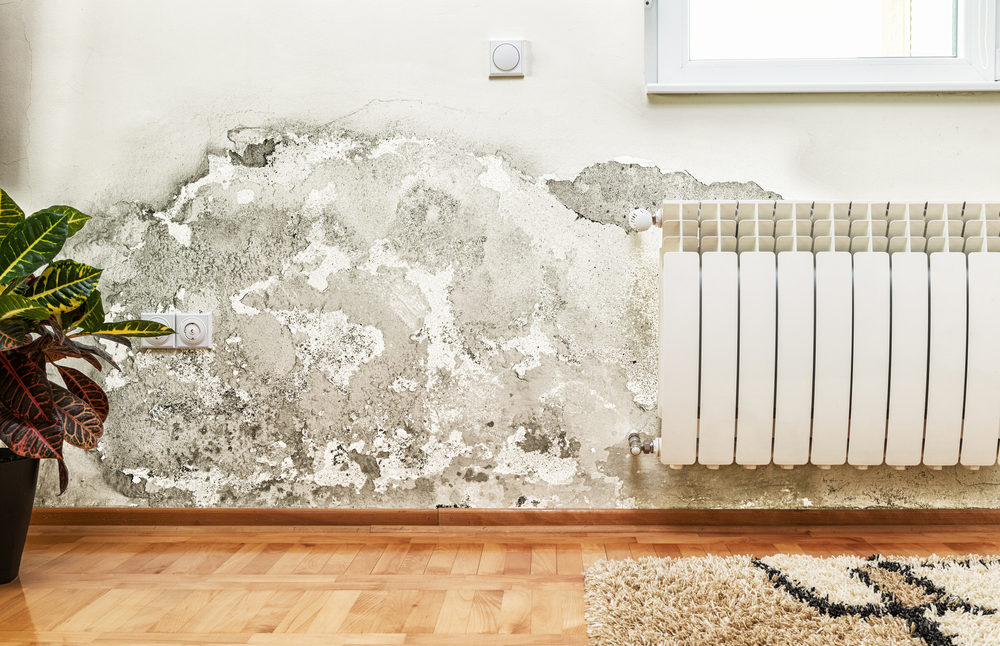If you have been told your building has rising damp you are now probably doing some research to find out what’s the best way to deal with the problem.
There are a number of technologies out there dealing with the rising damp. Each of these solutions has its pros and cons, some of them work better than others. They are also priced differently.
If you own your property and are planning on living there for some time still, or planning on selling it, then the obvious choice is to solve the rising damp issue, permanently.
In terms of workability and efficiency, rising damp solutions can be divided into 3 main groups:
- Solutions that merely cover-up the problem
- Solutions that slow down the rising damp
- Solutions that permanently stop the rising damp
The 3 Options to Solving Rising Damp Problems
- Cover the Rising Damp Up
- Slowing down the Rising Damp
- Solve Rising Damp Permanently

- Cover the Rising Damp Up
There is a whole industry dedicated to hiding or “covering-up” all imaginable dampness problems, including rising damp. Why? Because of cost. It is a lot cheaper and easier to cover something up than to get to the bottom of it and fix it. Chances are – if you have been dealing with a rising damp problem – that you have been advised by tradesmen to sort the rising damp out by replastering, using a membrane, changing the plasterboard or by tanking it.
All these solutions primarily focus on hiding the dampness problem rather than fixing it. You can recognize them as they “handle” the rising damp by addressing the wall surface only. Cement-based plasters, waterproof membranes, tanking, plasterboards and various ventilation systems fall into this category.
Why Covering Up Rising Damp won’t solve the problem?
Primarily because rising damp is not a surface but a DEPTH problem. It deeply permeates the wall fabric and the decay continues behind the surface – behind the new plaster or membrane – and will lead to more expensive repairs later.
These types of solutions are often chosen by people with …
- Low budget (e.g. lower demographics, landlord on a tight budget etc.)
- Lack of knowledge and understanding of the problem (e.g. no research, no homework, misinformed etc.)
- Intention to sell – cover-up is an easy way to walk away

2. Slowing down the Rising Damp
Solutions in this category slow down rising damp or make it look less intrusive.
Listed buildings
For old, listed buildings where invasive building work is not an option, the most common way of dealing with rising damp are:
- Re-plastering with breathable lime plaster and / or
- Lowering the water table by installing a drainage system.
These measures will improve the situation but will not solve the problem as the capillary rise and the resulting salt decay will continue to damage the building fabric behind the new plaster.
Other buildings
For non-listed buildings the mainstream solutions are chemical injections, also called chemical DPCs. This is an attempt to control rising damp by injecting water repellent chemicals into the walls in order to prevent the water from rising in the capillaries.
The main challenge of the chemical injections is penetration, their inability to fully block off all pores to achieve a perfect seal. Additionally, the aging of chemicals, the corrosive effects of ground salts, cracks in the masonry due to vibrations and settlement will further weaken its efficiency and the rising damp problem will return.

3. Solve Rising Damp Permanently
In order to fully solve rising damp, the capillary water flow must be permanently stopped. This to prevent the continuous build-up of salts in the building fabric, which is the main cause behind the permanent decay of the masonry. There are 2 types of solutions in the permanent category:
Retrofit Physical Damp Proof Courses
These solutions attempt to insert a new damp proof course into the masonry. The wall is drilled or cut-through horizontally with a chainsaw and steel plates are forced into the gap. This stops rising damp, the results are long-lasting but the solution is VERY invasive. For this reason, it is not widely used as a solution (nor in South Africa).
Magneto-Physical systems
The latest technological breakthrough, magneto-physical systems such as the AQUAPOL system, due to their non-invasive nature, are particularly suitable for the dehydration of historic or listed buildings.
This solution uses electromagnetic energy to dry out the walls. It addresses the root cause of the problem by permanently stopping the bond between the water molecules and the wall, and when water molecules can’t bind to the wall surface, the phenomenon of rising damp stops altogether.
Dampstar is an expert in the industry and would be more than happy to visit your property to provide you with a free quote. Contact us today to get started.

